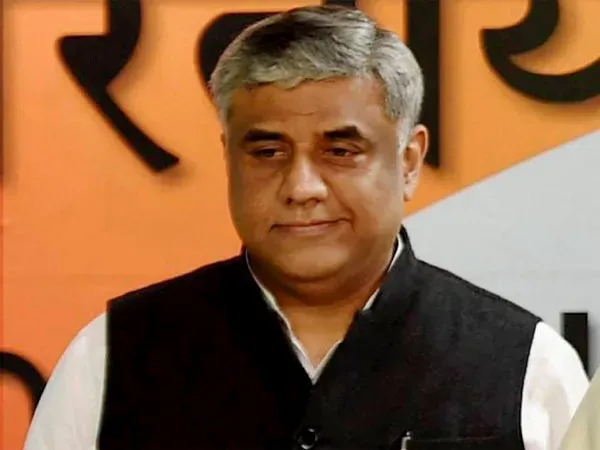Creating employment in the long run

- M.V. Rajeev Gowda, Aakash Satyawali
One key flaw with the annual Budget process is that the Finance Minister gets a platform to make grand announcements, which trigger banner headlines. The next year, more announcements are made, triggering more mega headlines. No one bothers to hold the Finance Minister accountable by checking whether the previous year’s headline scheme was implemented successfully.
Promises of employment
For a few years, the current Finance Minister used to announce huge disinvestment targets, the proceeds of which would lower the fiscal deficit significantly. None of these efforts saw the light of day (except when one government entity bought a stake in another). This time, disinvestment declarations were displaced by announcements on employment. While the belated acknowledgement of the jobs crisis is welcome, unfortunately, these too are designed to remain unfulfilled. A month after the announcements, there seems to be no substantial progress. The Finance Minister announced a five scheme package to address the unemployment crisis. Borrowing ideas from the Congress’ Manifestos, the government said it aimed to incentivise corporates to take on 1 crore interns over the next five years. The design of this scheme makes it a non-starter. The internship programme is supposed to be run by the top 500 companies. Not including micro, small and medium enterprises, who could use lower-cost interns, in the ambit of the programme defies logic. The scale announced works out to each company, on average, taking on 4,000 interns every year. Most companies do not have more than 4,000 permanent employees on their rolls. With Artificial Intelligence tools making more positions redundant, why will companies double or triple their workforce in the short run? A day later, the Finance Minister clarified that the scheme was not mandatory and merely a nudge. The Congress’ Right to Apprenticeship proposal was planned to be open to all companies. Its foundation involved the operationalisation of an Apprenticeship Act that meets the needs of job seekers and employers. It recognised that when youth get an opportunity to learn and train on the job in a nurturing environment, their capabilities would be transformed. That would help them to overcome the deficiencies in their education and skilling. However, none of these nuances are even acknowledged by the government. Employment-linked incentives are a good idea in principle. But the government erred in choosing measures that are destined to fail. As it did with the Atmanirbhar Bharat package, the government is principally relying on supply-side measures to solve issues that are predominantly driven by lack of demand. It is promising to finance a portion of the recruitment expense. But if demand does not pick up and production capacity remains the same, which company will risk reducing profit margins by adding more workers?
The lack of jobs
Just before the Budget, a report by Citigroup Inc highlighting the persistent job crisis spooked the government. The Reserve Bank of India (RBI) promptly released data saying about 109 million jobs were created between 2019-20 and 2023-24. Experts have questioned the methodological limitations of the RBI data as it relies on extrapolation of population data and results from various employment surveys. Additionally, it fails the smell test. Claims of mass employment generation fall flat when we refer to the latest Periodic Labour Force Survey (PLFS), which shows that labour force participation rate since 2019-20 has increased by only 4% points. A 109 million new jobs would have led to a sharp increase in labour force numbers.
The bulk of the job creation is from people moving into agriculture and self-employment. Almost 46% of the workforce is ‘employed’ in agriculture. Since there has been no major rise in agricultural income, the only conclusions we can draw is that people are working in farms because there are no gainful jobs available elsewhere. Further, MGNREGA data show that in 2024-25, 24.8 lakh new persons have been included in the job cards. Overall, 5.8 crore people have demanded jobs already. This increase suggests rural distress.
The decade of ‘Make in India’ saw the share of manufacturing in the workforce decline from 12.6% in 2011-12 to 11.4% in 2022-23. Industrial production in job-creating sectors like textiles, electronics, leather, and paper products has been negative.
The recent tragedy in Delhi, where three students preparing for government exams drowned, demonstrates the pitiable conditions students have to bear to crack competitive exams. Lakhs of people go through the rigour because they feel that a job in government is the only guarantee of upward social mobility. In a reply in the Lok Sabha, the Ministry of Personnel said that in the first eight years of the BJP government, 22 crore government job applications were received whereas only 7.2 lakh were provided employment. There are nearly 30 lakh vacancies in sanctioned posts at various levels in the Central government. This is where the government can step in by ensuring timely recruitment and curbing paper leaks.
Instead of nudges, the government should have relied on an economic package for a long-term investment plan in essential public services. A thrust towards green jobs can have various benefits. Addressing the deficiency in services will have a massive impact on the quality of life, help generate a productive workforce, and create jobs.
M.V. Rajeev Gowda, Former MP who heads the Congress’ Research Department; Akash Satyawali, National Coordinator of the Congress
Courtesy: The Hindu







